Analyzing the language of gendered marketing
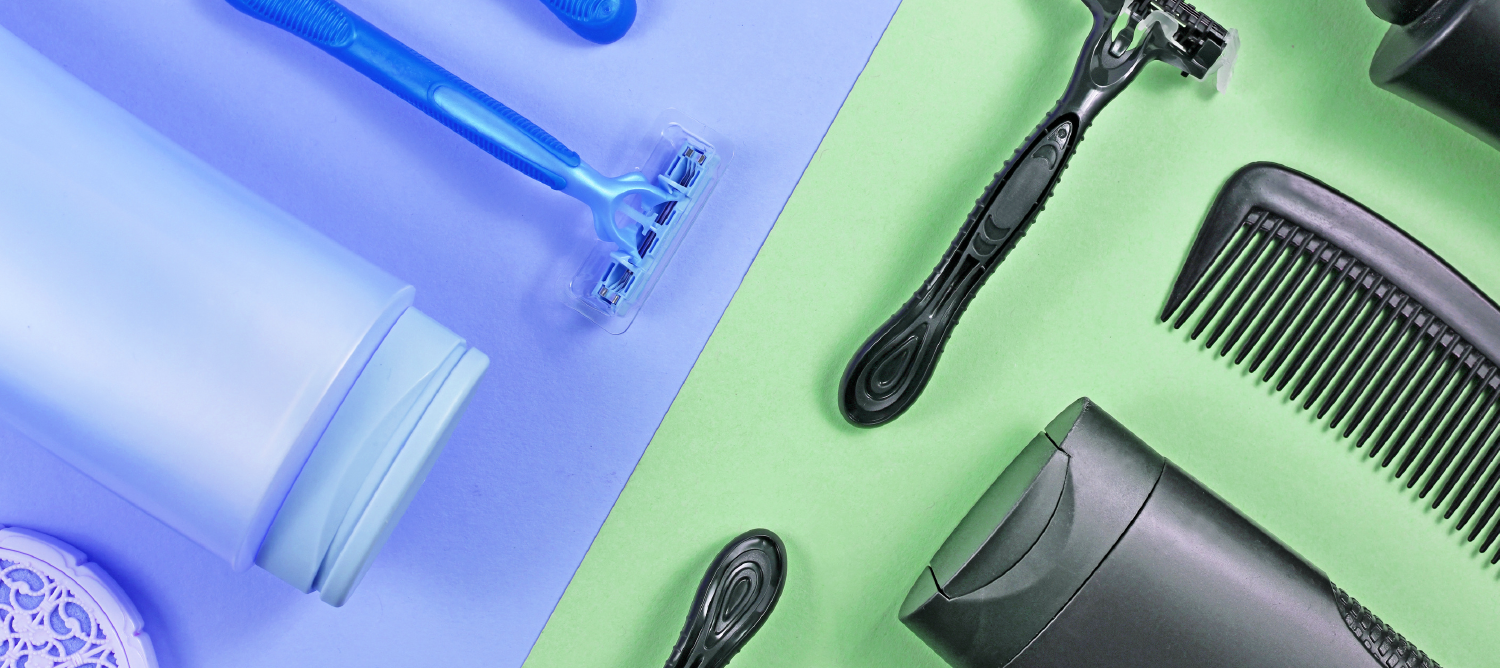
What makes a product gendered? Is it the color? Brand name? Product description?
Everyday essentials like deodorant, shampoo and even pens are gendered through the use of visuals and language. As self-proclaimed language nerds, we sought to identify how brands utilize language to market two equivalent products to different audiences.
We compiled product descriptions and advertising for gendered products from a range of brands like Gillette, Olay, Dove, Billie and AXE. Next, we uploaded the text data to Relative Insight, where our platform used text analysis to compare the language of men’s products and women’s.
Relative Insight uses comparison to reveal the differences in language between two qualitative data sets. Linguistic insights include differences in words, topics, grammar, phrases and emotion. This technique weeds out common language used across both genders to reveal the unique attributes of each data set. Here’s what we found…
BODY WASH
Men’s
Men’s body wash is overt in its targeting, so much so in that products often contained the words men or men’s within the brand name, product name or product description. This was often accompanied by exclusive words like specifically. Scents and adjectives also had gendered connotations, ie. the phrase “masculine scents of cardamom and red cedarwood.”

Body wash marketed towards men often employed athletic language, using the words sport and strong. Products were positioned as a solution to workout-induced sweat and odors, resulting in a deep clean.
Men’s products were regularly described as easy to use. How does one make soap any easier? Combine it with shampoo AND conditioner, of course. While not all products were 3-in-1 body and hair cleansers, this innovation was only seen from products marketed to men.
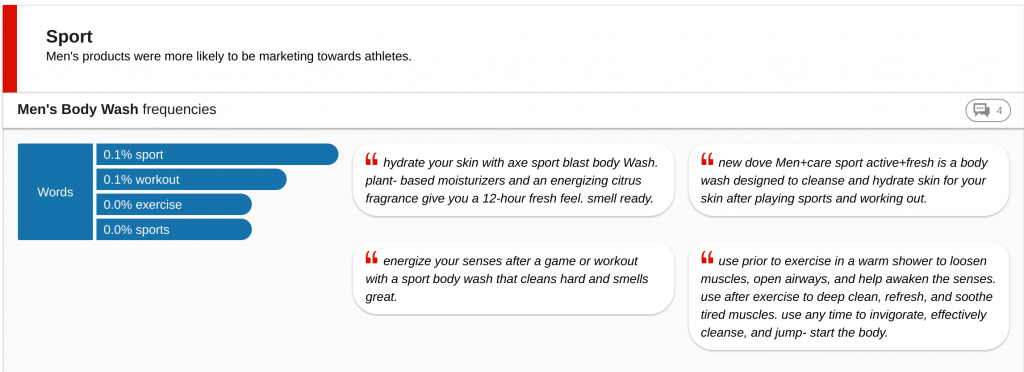

Women’s
Most body washes marketed to women did not advertise specific use for women. Instead, adjectives used to describe products often possessed feminine undertones. Words like dewy and luminous have no gender, but typically cater to a feminine audience.
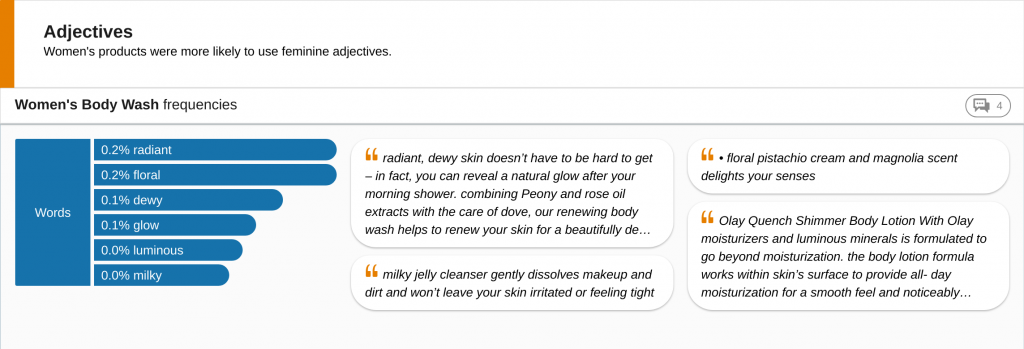
Women’s products placed value beyond simply cleansing, claiming soothing and revitalizing properties. Products frequently catered to sensitive skin through the use of natural or botanical ingredients.
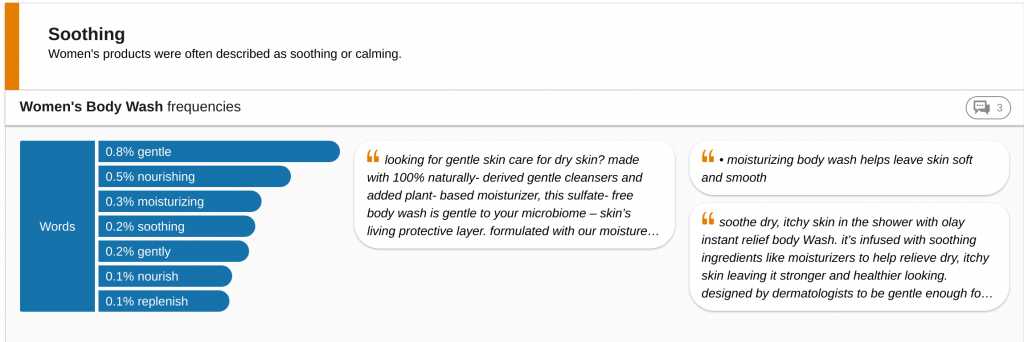
Razors
Women’s
Inverse to what we observed in body washes, women’s razors were advertised specifically for use for women. In addition to positioning value around women’s shaving needs (ie. bikini lines and legs), many razors were plainly advertised as products for women.

Another contradiction we saw between our analysis of razors and body washes was the use of the word easy. In this case, women’s razors were often described as easy to use or simple. With body washes, we saw this same language used to target men.
Women’s products claimed soothing and moisturizing properties, often for the purpose of treating conditions like ingrown hairs or dry skin.


Men’s
There were fewer mentions of the word men or men’s in product descriptions for razors. We saw less use of gendered words or phrases to describe the products. This is partly due to the fact that many razor brands including Gillette and Manscaped are exclusively men’s brands, and do not require mention of gender in further product marketing.
One common theme we saw across the data set was the use of technical language. Brand’s claimed rigorous product engineering, resulting in increased precision and comfort. Descriptions were more likely to include product specs like razor length, electric motor speeds and contoured angles.
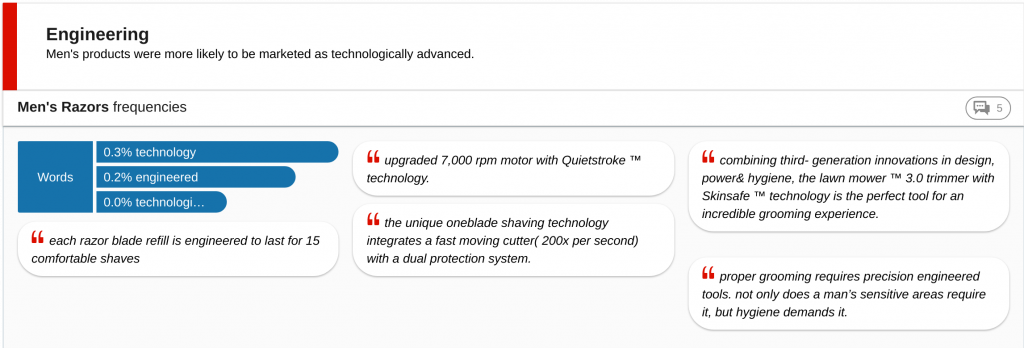
Men’s razors routinely claimed an improved product experience and resulting shave. Brands often utilized words like reduce to illustrate product benefits – such as fewer passes, less irritation and reduced tug.
Marketing products to the correct audience is crucial in developing a loyal customer base. While it’s becoming increasingly debatable whether universally-used products should cater to a single gender, audience marketing strategies are seen across all industries and products. These insights can help brands identify the language used to target specific audiences – as well as uncover gender stereotypes that could be turning customers away.
Relative Insight can do it all – from social listening data to reviews and long-form open-ended survey results! Contact us using the form below and we’ll show you how.